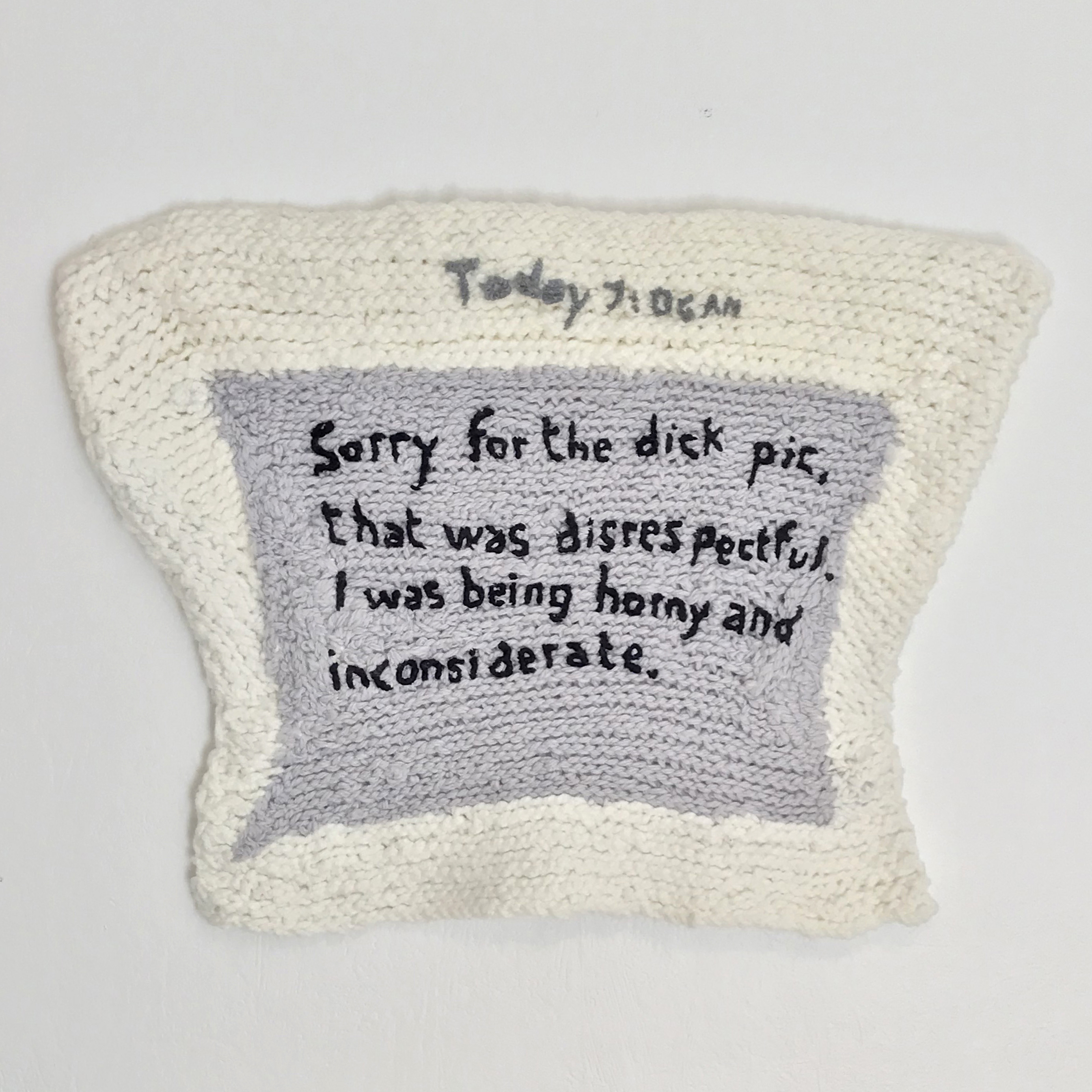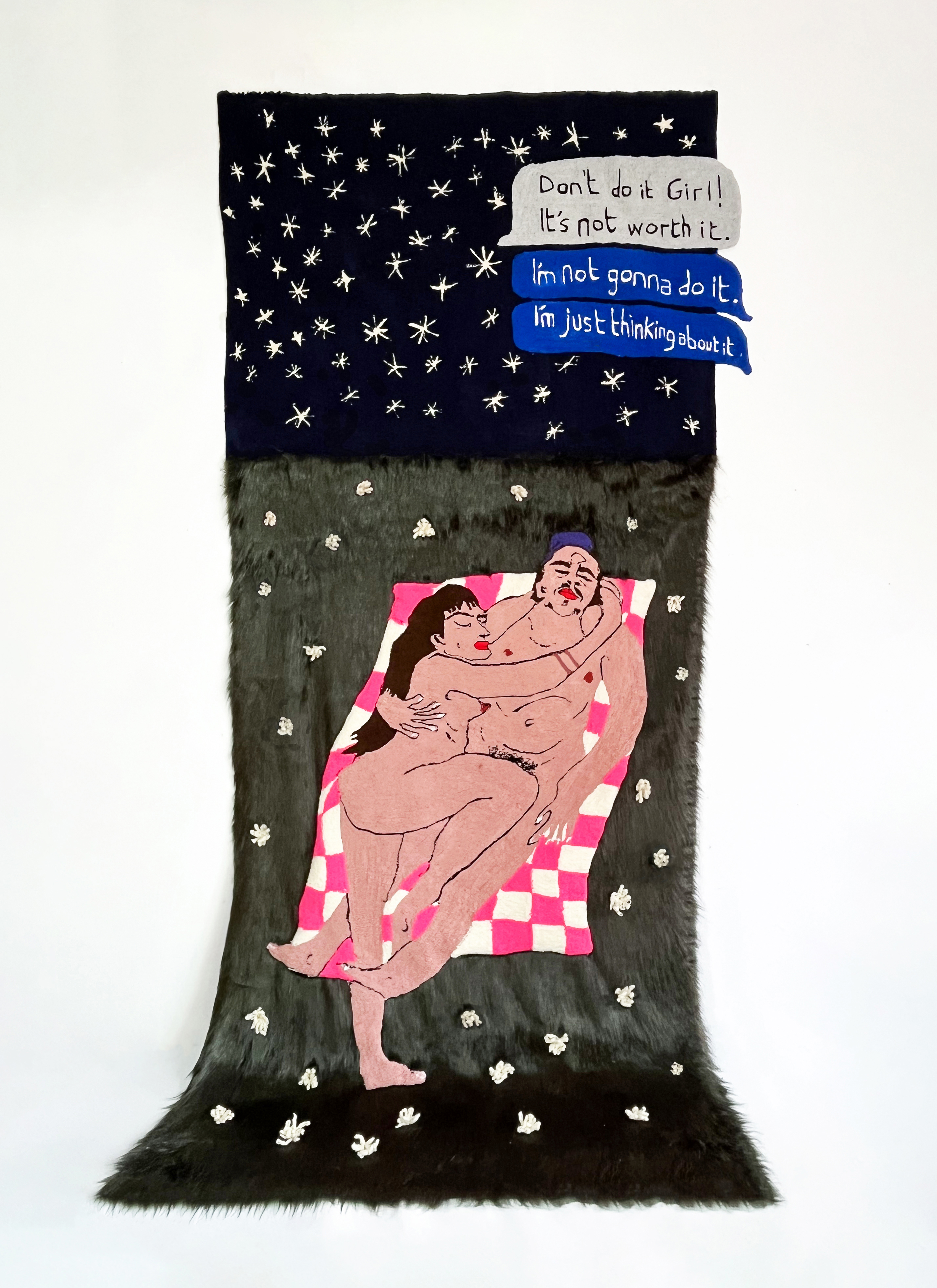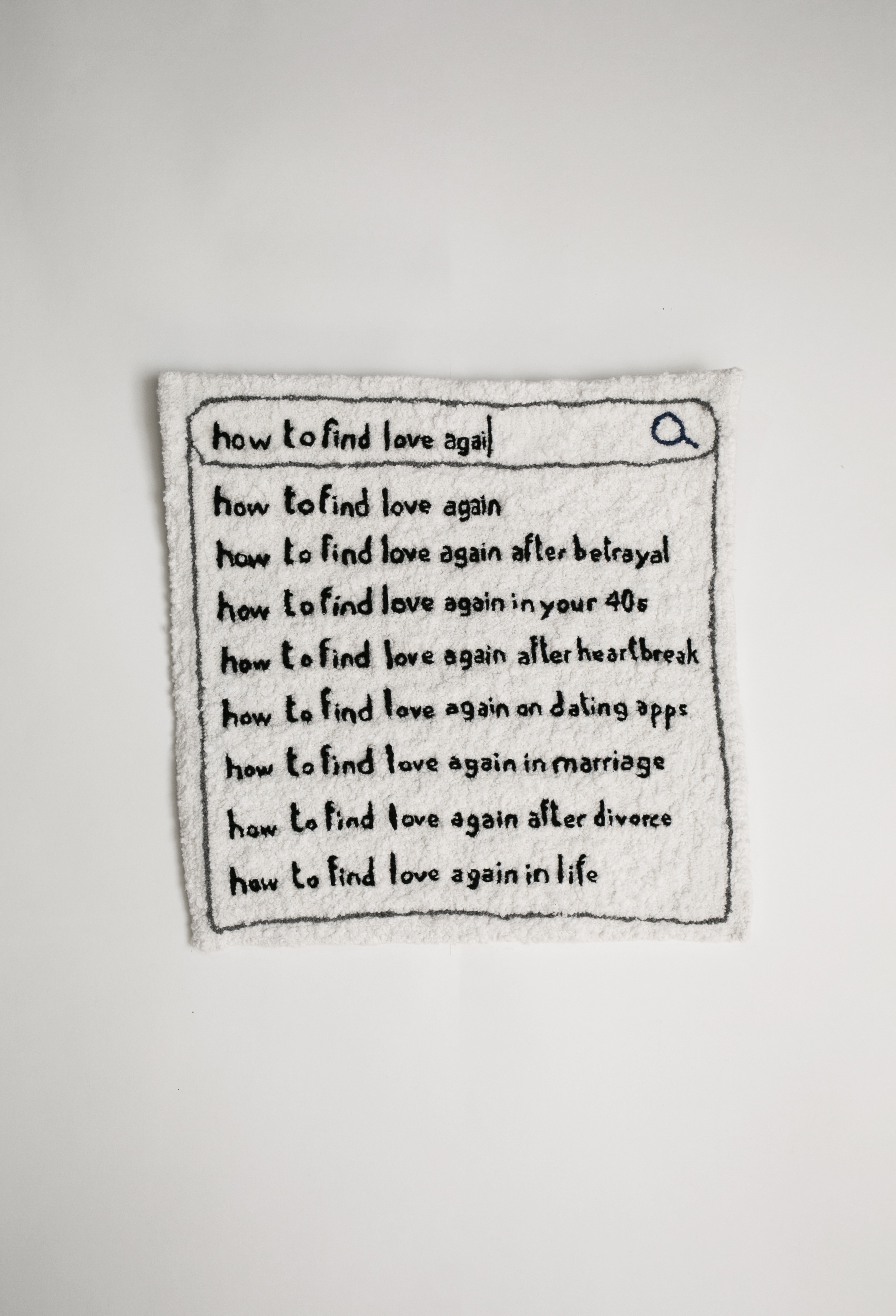Éva Ostrowska is a visual artist whose mixed media work critiques social dynamics and romantic relationships using a raw and unapologetic combination of humor, sarcasm, and irony. She studied Fine Art at the Sorbonne in Paris and the École des Beaux Arts de Bordeaux. She lives and works in France. Her work was included in the exhibition, Out of Joint, at New Collectors from January 20–February 26, 2023.

Sibilla: What is your upbringing? Where you grew up, what you found interesting as a child/young adult, etc)
Éva: I was born in Paris but grew up in a tiny city by the beach in Bretagne, west side of France. My parents divorced when I was three years old. Then my father vanished, so my grandmother and mother raised my brother and me. I grew up in a very modest family. I spent my childhood in the middle of nature, surrounded by animals. We had dogs, cats, rabbits, turtles, chickens, and birds. The energy of two strong women, such as my grandmother and mother, influenced me to become the woman I am today.
Sibilla: Your work is predicated on how we interact with each other on the Internet. Does it always stem from personal experience? Or are you collecting data from the experience of others too?
Éva: About 60% comes from my personal experience and past love stories. The rest come from my friend's experiences or the stories I read on the Internet, or love forums.

Sibilla: In 2016, you married yourself after finding out about your fiancé's infidelity. How did that experience influence how you proceeded with your artistic practice? Also, would you consider that performance art or is it a personal experience that you wanted to share publicly?
Éva: Just after I married myself, I received many messages from all over the world about people who got cheated on and were in the same situation as me. They were very supportive and kind. The energy I received from them motivated me to "raise my voice louder". Why should we feel shameful when we are lied to, cheated on, and disrespected? It influenced me profoundly. I wanted to expose the things we are usually secretive about, like the dirtiness of love, our pain and vulnerabilities, and the dramatic stories we are too shy to express.
It's hard to say, "hey, I've been cheated on." It should not be shameful; it happens every day and to more people than we think.
I don't see any difference between being an art performance and being my personal experience publicly shared. Art is life. My life is art. It comes from my own experience, hoping it will create a dialogue or get some resonance with the public's personal lives.

Sibilla: I see your work as being very feminist. Are there any feminist writers or artists who inspire your work?
Éva: I don't see myself as a feminist. I feel there are more and more misconceptions and stereotypes associated with feminism. Besides, we have many genders, and feminism keeps up with the binary idea. It's always about the struggle between men and women. I never felt like I was the victim of men. I don't hate men; I adore them and feel deeply inspired by their actions, especially in love relationships. However, something is changing in the air; many genders, symbols, and social and ethical positions exist. It's a 'genderquake.' So we are all here to aim for more acceptance and tolerance, be respected as our true selves, and be treated how we feel. I am a student of contemporary love. I learn every day. A book that influenced me is "The End of Love" by Eva Illouz. She documents the myriad ways in which relationships end. It's more of a sociological approach to love. Through my art, I like to study our new behaviors and how the Internet influences us when it comes to love relationships. I'm fascinated by how we have become lazier and lazier in keeping a relationship today. There are so many choices online. We become superficial and less involved. I'm a bit concerned about seeing how it will evolve with AI. Who knows how we will handle our relationships in the future...
Sibilla: Weaving and knitting are common mediums in your work. When did you start making work in this medium and can you explain your reasoning?
Éva: A few years ago, I had an accident and had to stay in bed for months to recover. So I could not go to my studio or do any work. That's when I started learning how to knit on Youtube tutorials. Then when I got better, I went to Aubusson, the famous tapestry city in France. There I learned traditional weaving techniques and how to dye my fiber wool. I use vegetal dye on some of my yarn.
I picked this medium as a symbol and dialogue with my artist statement. I like to draw a parallel with the Greek myth of Penelope. Odysseus, her husband, goes overseas for more than 20 years, and in the meantime, Penelope weaves and unweaves her forever tapestry to prevent herself from getting married to another man. The story depicts Penelope as a very devoted and faithful wife (though nobody says if Odysseus stayed loyal to her.) In the poem « Carta a un desterrado » (1924), Salvador poet Claribel Alegria imagines a more contemporary letter that Penelope would have written to her husband, telling him she didn't wait for him and found a new husband instead. I liked that story a lot. It gives a fresh perspective to the character. I picked "wool" as my primary medium because I like to think a thread is like a storyline. I can tell many stories with my yarn. Every thread weaved or knitted is like a print of time. It relates to time and contrasts with our high-speed Internet contemporary world.
